Black spots on tomato leaves and stems. If you notice a dramatic change in the color of your tomato plant’s leaves (Solanum lycopersicum L.), it is cause for concern. It usually starts on the lower leaves first. You will see black spots, and the leaves will begin to yellow and die.
In this article, I am talking about the causes and remedies for black spots on tomato plants. If your tomato plant has a disease or pests and you are unsure what the causes are, this article is for you.
Black Spots on Tomato Leaves and Stems
The leading causes of black spots on tomato leaves are septoria leaf spot (Septoria lycopersici), early and late blight (Alternaria and oomycete Phytophthora), aphids and spider mates. You can treat leaf spots and blight using a fungicide, baking soda and neem oil.
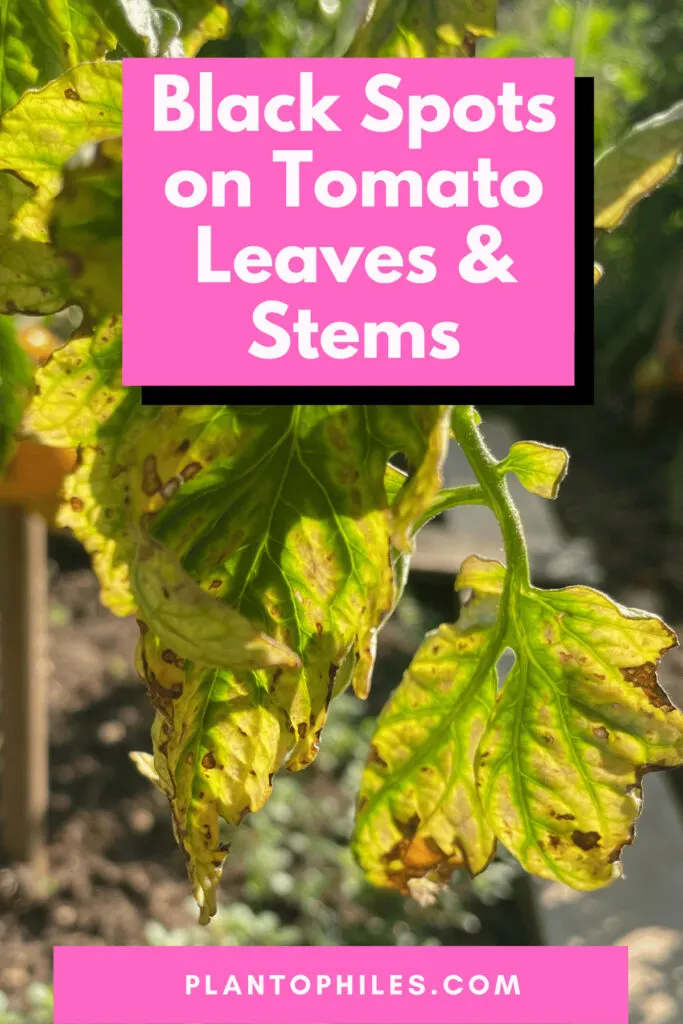
Table of Contents
Causes of Black Dots on Tomato Leaves (Brown Spots on Tomato Leaves)
Septoria Leaf Spot on Tomatoes
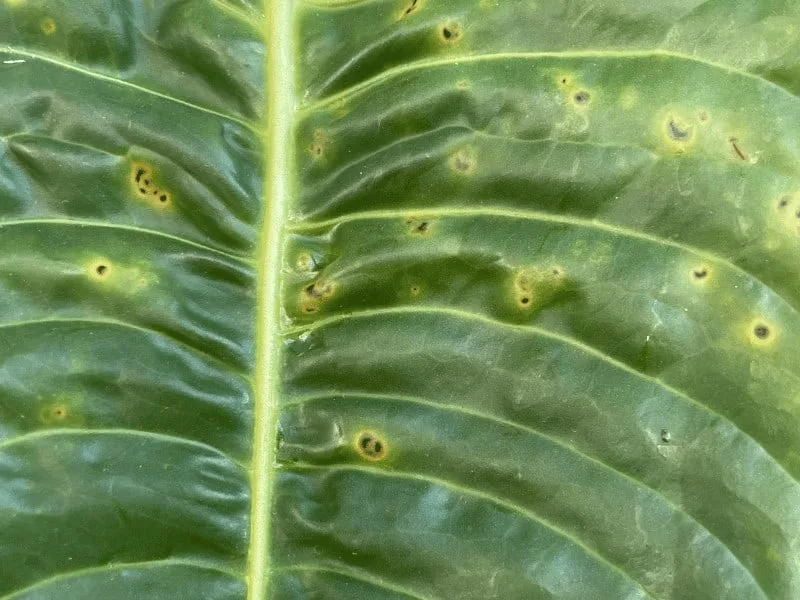
Septoria leaf spot is a prevalent disease in tomato plants. Septoria (Septoria lycopersici) is a fungus that affects a wide range of fruits and vegetables, from potatoes to eggplants.
The fungus lives on and in the soil and spreads through human contact or unsanitary gardening tools.
It spreads quickly but can be controlled and even cured if caught immediately.
Symptoms of septoria in tomato plants are circular-shaped spots that appear underneath mature leaves. The spots range between light and dark brown and have a faint yellow halo around the edges.
These spots will grow in size over time, eventually merging and taking over the entire leaf.
As septoria progresses, small black patches of moldy fungal spores may also grow on the leaves.
If left untreated, the leaves will eventually become dry and limp, causing them to fall off your tomato plant entirely.
Causes of Septoria Leaf Spot
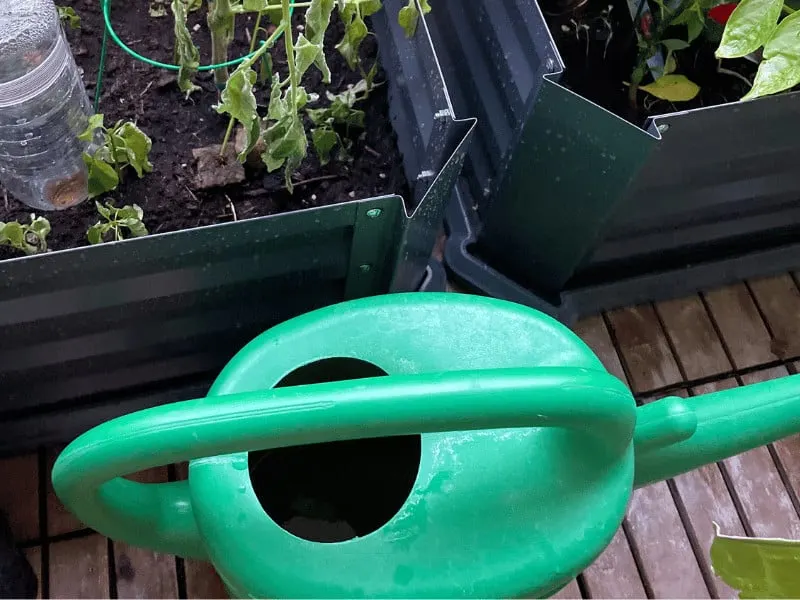
There are multiple reasons for septoria leaf spot. It could be due to the leaves of your tomato plant becoming too moist, caused by watering your plant from the top of the leaves instead of from the base near the soil. Another reason is heavy rainfall.
This makes the leaf’s undersides wet, making it easier for the septoria to latch onto it.
Often, septoria isn’t caught quickly enough. This is because it usually attacks the plant from the undersides of the leaves first, making it hard to spot until the disease progresses.
If septoria is left untreated for too long, it can result in your tomato plant becoming so damaged that it cannot bear fruit.
Prevention: Check your tomato plant’s leaves fully at least once a week so that you can catch any signs of it as soon as possible.
How to Treat Septoria Leaf Spot – Fungicides Work
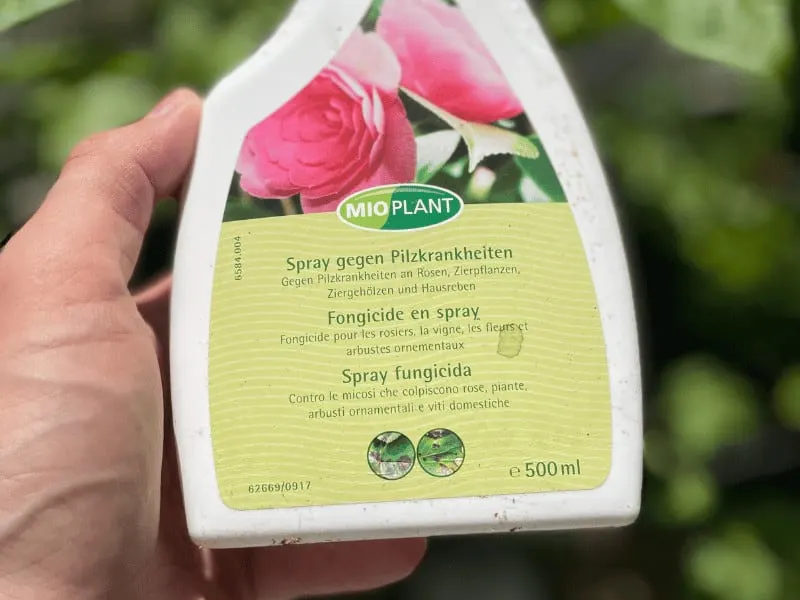
To treat septoria leaf spots on tomatoes, use a fungicide. The fungicide itself will not help with already infected leaves. It is best to take these off the plant.
Fungicide will protect the still healthy leaves against disease. It is best applied in spring and summer. Use 7-10 applications.
Spray an antifungal every 7-10 days onto the tomato plant. Closely observe how the fungal infection develops and continue the process until the infection is gone.
The fungicides that work are copper-based fungicides and chlorothalonil, maneb, mancozeb.
Early Blight on Tomato Plants – This is How It Looks
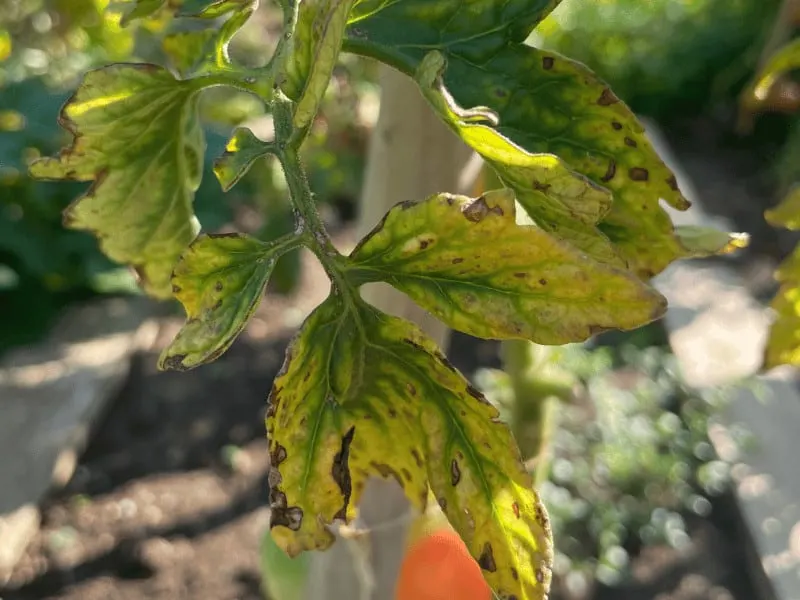
Blight is another common disease that has been known to frustrate gardeners all around the world. It thrives in moist environments and appears after heavy rainfall.
It can be very detrimental if it is not tended to quickly. It was the blight that caused the infamous and disastrous Irish potato famine back in the 1800s.
Blight has become a common issue in tomato plants, that seed varieties have been specifically bred to resist it.
Blight comes in two forms, early blight, and late blight. It is incurable if not caught early.
Early Blight On Tomatoes Symptoms
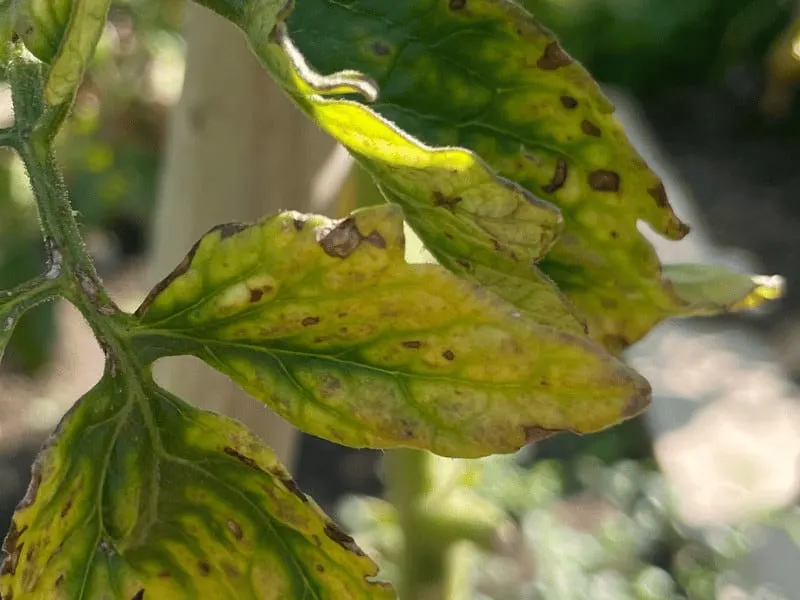
Early blight disease will begin on your tomato plant after fruits grow. Early signs are small dark brown spots appearing at the bottom of the plant’s leaves.
These will grow over time, becoming patches that will turn the leaf tissues yellow.
Early blight only affects the foliage of the tomato plant and doesn’t directly do any damage to the tomato fruits themselves.
However, the death of the leaves usually goes hand in hand with tomato fruit damage.
Too many leaves falling off your tomato plant can lead to insufficient shade to protect the fruits during their growth. Often, this results in them becoming sun-damaged or getting sunscald.
Treat early signs of early blight with a copper-based fungicide.
Mix the fungicide with water and spray it on the leaves every few days until you see improvement.
Late Blight On Tomato Plants Symptoms
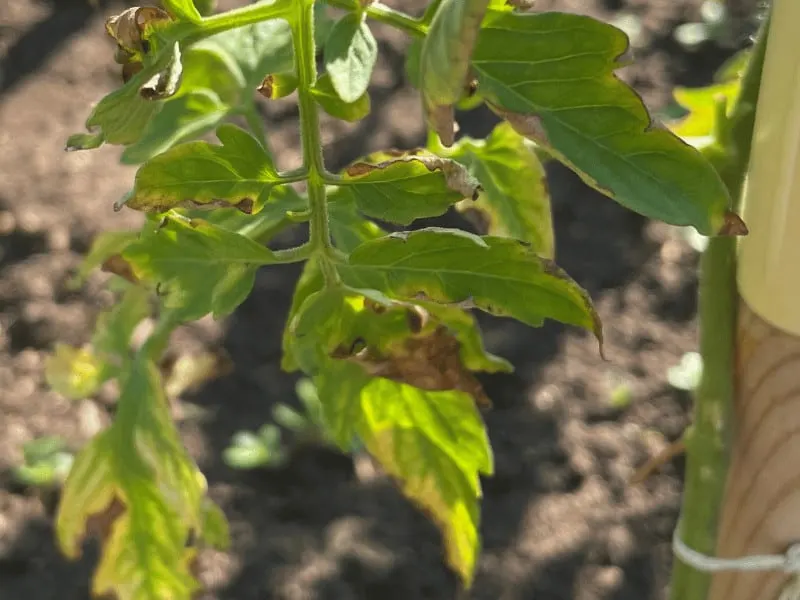
Unlike early blight, late blight can affect plants at any point during their growth.
Symptoms include dark spots on the leaf’s edges and growing upwards towards the stem. It spreads fast and can damage your tomato plant until it is too weak to bear fruit.
Over time a white fungus may start to grow on the stems and leaves, eventually resulting in the death of your tomato plant.
Early symptoms of late blight can also be treated with a copper fungicide. I also suggest removing infected leaves.
This is because late blight can spread faster than early blight. It must be controlled immediately to avoid damage to your tomato fruits and other crops.
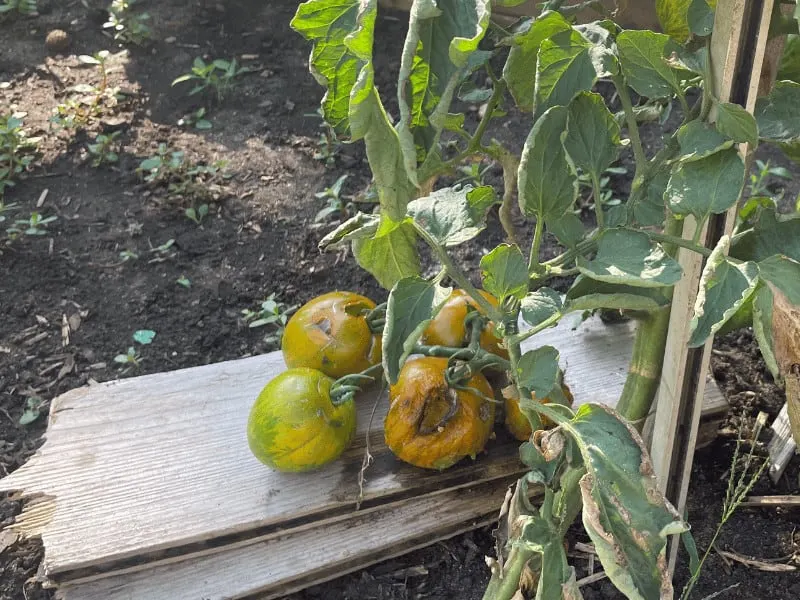
Aphid Infestation Causing Black Spots
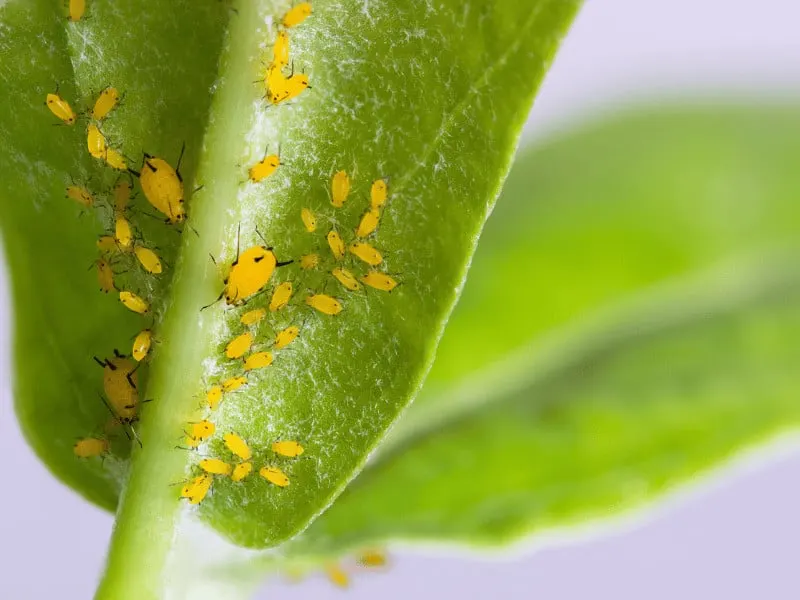
Aphids are common in tomato plants.
Aphids are small bugs that are dark grey or brown. Unlike most plant pests, they are visible to the human eye and look like small dots all over your plant’s leaves.
They usually live on the plant’s leaves, although they can spread to the stems in some extreme cases.
Infestations are usually caused by a flying variety of aphids landing on your plant and laying their eggs.
Aphids feed off the sap in plant leaves and excrete a “honeydew.” The honeydew then collects on the plant leaves and creates black mold spots.
Over time, they can cause yellowing of the leaves, which will eventually lead to curling and will cause your tomato plant to become so weak that it can no longer bear any fruit.
An aphid infestation can spread and completely take over your plant within weeks. Check the leaves every few weeks for any early signs. Jet them off with water, pluck them with your hands, or use an insecticide.
A Spider Mite Infestation Causing Grey and Black Spots on Solanum lycopersicum L.
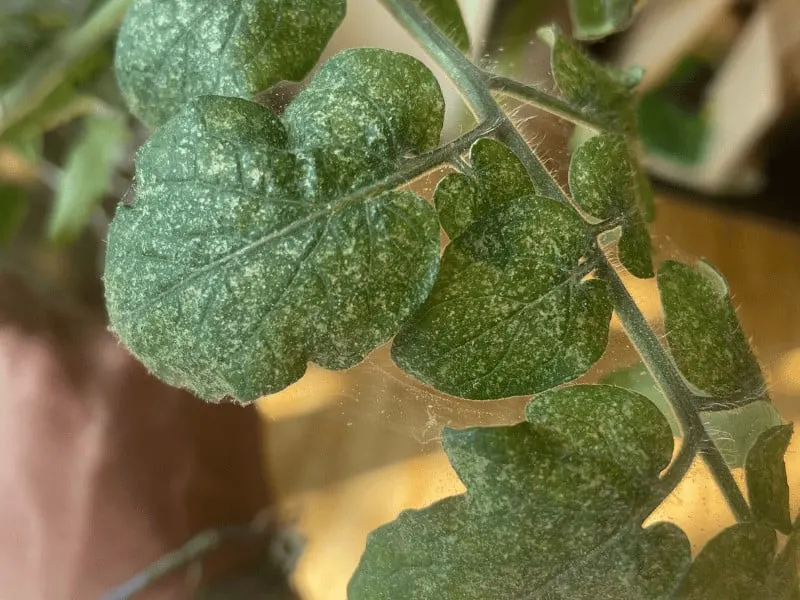
Spider mites are small, black to red and yellow. According to Maine.gov, they are only 1/50 inch long (0,05 cm). Spider mites attach tomato plant leaves. They build brownish nets in between branches and on leaves.
In addition Spider mites suck the sap out of the leaves. These turn yellow and brown. After that they wilt and die. Due to fewer green leaves, the tomato plant can take in less chlorophyll. Photosynthesis is reduced and growth stunted.
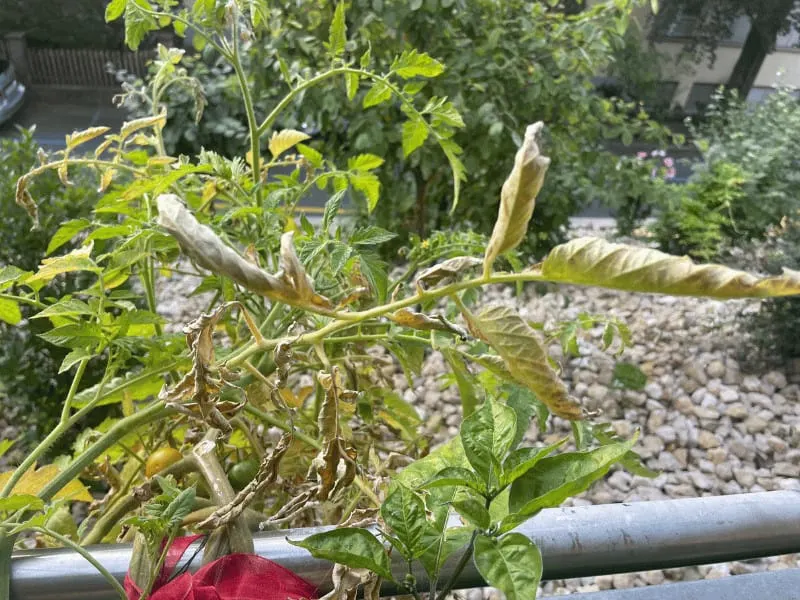
Black Spots on Tomato Leaves Causes & Prevention
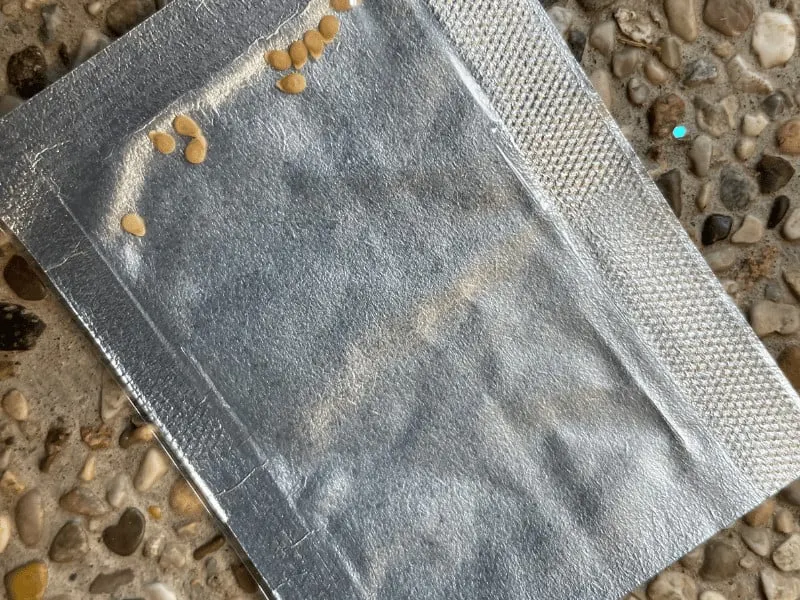
Many gardeners make the common mistake of planting their tomatoes too close.
Ensure that you plant your tomato plants are spaced 18-24 inches apart to prevent any disease from spreading to your crops (46-61 cm).
Rotate tomatoes when planting around your garden to avoid replanting into infected soil.
Diseases can survive on plant debris and soil throughout the winter months. Some diseases even for years.
Purchasing disease-resistant seeds is another way to prevent your tomato plant from suffering black leaf spots.
Wide varieties of tomatoes have been bred to be immune from certain diseases, such as blight. This information can usually be found on the back of seed packets.
How to Treat Black Spots on Tomato Leaves And Fruit- Does Baking Soda Work?
Baking soda works great as an antifungal against black spots on tomato plants. Ripe Tomato farms suggests using baking soda against pest and fungal infections. Sodium bicarbonate contains salts and is best sprayed diluted in water.
Alternatively you can also spray hydrogen peroxide according to The Rusted Garden. Clean the leaves with hydrogen peroxide every couple of days.
Natural Treatments for Black Spots on Tomato Leaves
According to Project Diaries, you can create your own organic fungicide to treat black spots. You will need:
- Water (16.9 oz or 500 ml)
- Vegetable oil (1 teaspoon)
- Baking Soda (1-3 teaspoons)
- Eco-Friendly Dish soap (1 spoon natural castile soap)
Using Neem Oil to Treat Black Spots
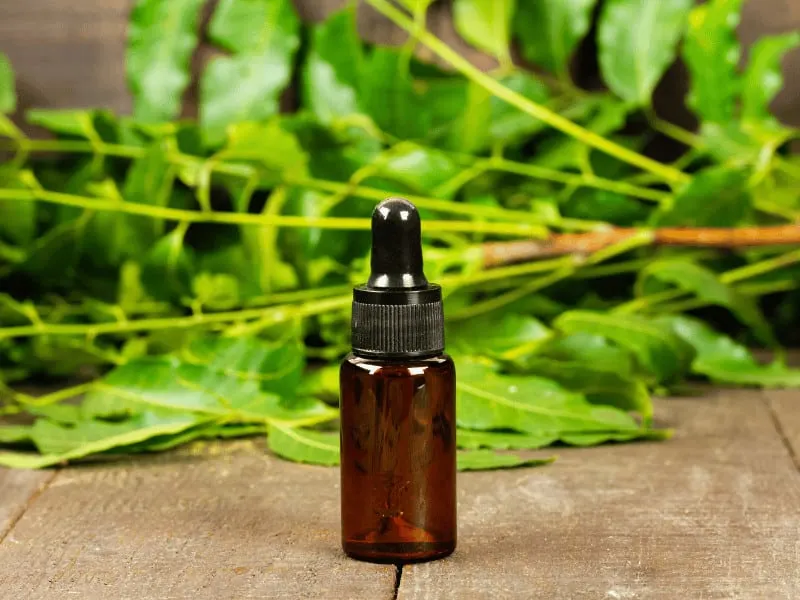
Neem oil is an organic pesticide against bugs such as mealybugs and thrips but also against fungal and disease issues on tomato plants. Neem oil can be used on both, houseplants and vegetables.
You can either use a nem oil concentrate and dilute it with water or an already diulted neem oil solution. Spray it onto your tomato plant in the morning. Do not apply it in the afternoon or on very sunny days. The drops and coating can act like a magnifying glass and bur the tomato foliage.
Applying it in the evening might cause leaves to stay wet for too long. This is exactly what we want to prevent in order to get rid of fungal infestions on leaves.
Brown Spots on Tomato Leaves
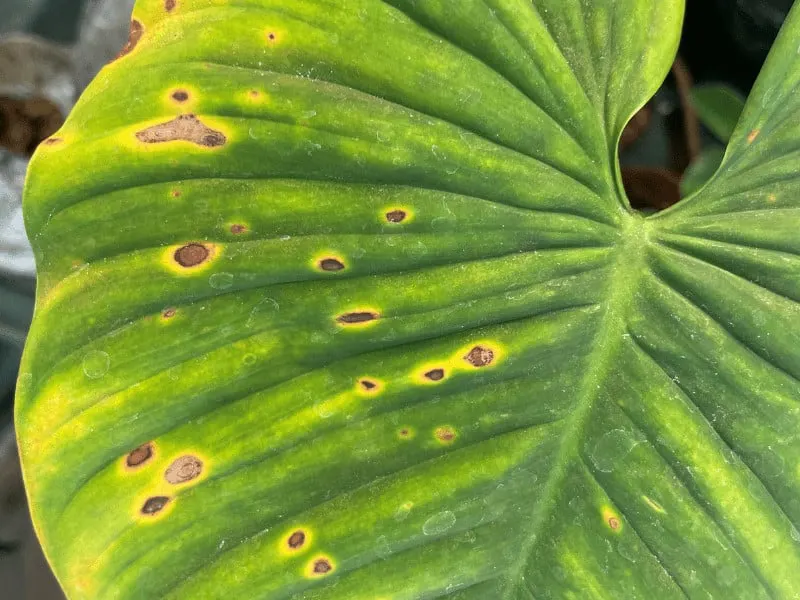
The main reason for brown spots on tomato leaves is Early blight and Septoria leaf spot. These fungal issues are caused by water that remains on the leaves for too long. The fungus spreads across the wet surface of the foliage.
According to Minnesota University, early blight is caused by Alternaria tomatophila and Alternaria solani. They emerge in humid and warm temperatures.
Septoria leaf spot is caused by Septoria lycopersici. It mainly attacks the lower leaves and spreads across the foliage. It is most common when the tomato plants are about to flower. These spots can also appear on stems and petioles.
You can treat brown spots on tomato plants using a copper fungicide or general fungicide spray.
I recently had a lot of issues with brown spots in my grow tent. The humidity was too high, and I had insufficient airflow. I corrected this by adding two fans to the tent. I hung at the tent’s ceiling, blowing onto the plant canopy.
The other fan blows fresh air into the grow tent and is placed at the bottom. This way, leaves do not stay wet for more than 30 minutes. This ensures that I no longer get brown spots on the leaves.
Dark Spots and Black Areas on Tomatoes
Dark spots at the bottom of tomaotes are a sign of blossom end rot. This is caused by insufficient calcium in the soil. This then results in black spots. It can be on the blossoms and then later on on the tomatoes according to Stoney Ridge Farmer.
To remedy blossom end rot pick the tomatoes early and let them ripen. Let them face bottom up. Ensure they are not touching each other.
Frequently Asked Questions
Can you eat tomatoes with black spots on them?
It is not recommended to eat discolored tomato fruits, as they could be infected with disease or fungi. Eating diseased fruit could cause you to become unwell.
Can I compost a diseased tomato plant?
Do not compost a tomato plant that has been affected by diseases. Any diseased plants should be disposed of or burnt to avoid spreading this to other crops.
Can you treat black spots on tomato leaves using baking soda?
Baking soda mixed with soap and vegetable oil can treat tomatoes. Use a tablespoon of each mixed with water to treat the black spots.
What is the best septoria leaf spot treatment?
Copper fungicide is generally considered to be the best treatment for leaf spot disease. It only works to prevent the spread of the disease. Infected leaves cannot be saved.
What are little black spots on tomatoes?
Little black spots on tomatoes are early blight. These spots occur when the water is warm and wet. Treat with a copper-based fungicide.
Black spots on tomato leaves and stems are caused by septoria leaf spot, early blight, late blight, aphids and spider mites.

Daniel has been a plant enthusiast for over 20 years. He owns hundreds of houseplants and prepares for the chili growing seasons yearly with great anticipation. His favorite plants are plant species in the Araceae family, such as Monstera, Philodendron, and Anthurium. He also loves gardening and is growing hot peppers, tomatoes, and many more vegetables.


